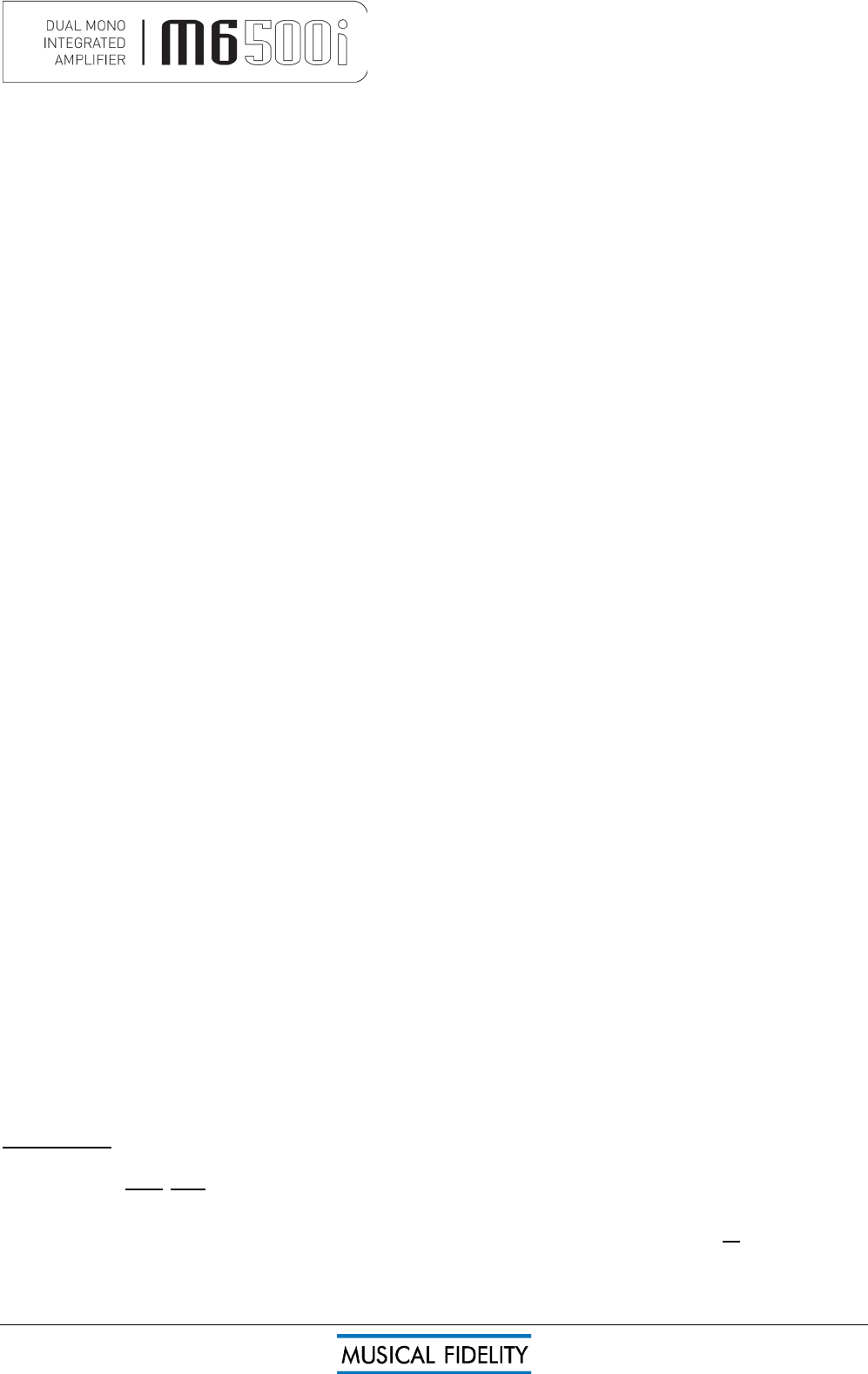
OPERATION
Issue 2 Page 9 of 13
Starting
Once all connections are made, the orange STBY (standby) LED should be lit. Switch on the unit, using the
POWER button front of the unit. The orange STBY LED will go out, red MUTE and blue POWER LEDs will
light. Speaker outputs are muted for about 6 seconds, so no sound will be heard from the speakers. Once the 6
seconds is up the red MUTE LED goes out, indicating unit is settled, and ready for use. The unit may be placed
back in standby mode simply by pushing the button again, blue POWER LED will go out and the orange STBY
LED lights again
Volume
The volume should be adjusted for normal listening levels. This is done by turning the volume up/down knob on
the front panel. Adjusting the volume can also be achieved using the remote handset, using the volume
up/down buttons (see page 8). A 7 segment LED display shows the actual setting to ½ dB resolution.
If the volume is set too high (from a previous listening session) at switch on, the unit will turn the setting down to
a more appropriate level. This is normal behaviour and to protect loudspeakers from potential damage.
Mute (Remote Control only)
The sound from the speakers may be muted by use of the MUTE button on the remote. Press once, and MUTE
LED will light indicating muted state. No sound will be heard from the speakers.
To return to listening; simply press the MUTE button again so MUTE LED is no longer lit.
BALANCED
To use the balanced input, connect balanced source outputs to the balanced input XLR sockets (see page 7).
Select BALANCED input by pressing the BALANCED INPUT button so BALANCED INPUT LED is lit.
Selecting the BALANCED input can also be achieved by pressing the corresponding button on the remote
handset (see page 8).
CD
To use the CD input, connect CD player outputs to the CD input RCA sockets (see page 7). Select CD input by
pressing the CD button so CD LED is lit. Selecting the CD input can also be achieved by pressing the
corresponding button on the remote handsets (see page 8).
Tuner
To use the tuner input, connect tuner outputs to the TUNER input RCA sockets (see page 7). Select TUNER
input by pressing the TUNER button so TUNER LED is lit. Selecting the TUNER input can also be achieved by
pressing the corresponding button on the remote handset (see page 8).
AUX/HT
To use the AUX input as a standard input, move the AUX/HT switch on the back panel to the AUX position.
Connect source outputs to the AUX input RCA sockets (see page 7). Select AUX input by pressing the AUX
button so AUX LED is lit. Selecting the AUX input can also be achieved by pressing the corresponding button
on the remote handset, (see page 8).
To use the AUX/HT input as a HT input, move the AUX/HT switch to the HT position. The 7-segment displays
will now show “ht”. This input is now unaffected by the volume control, allowing volume control on an external
Home Theatre processor to be used directly. Connect Home theatre or other source outputs to the AUX input
RCA sockets (see page 7). Select AUX input by pressing the AUX button so AUX LED is lit.
IMPORTANT:
Take great care when using the input in HT mode. Ensure that the volume control is
turned right down on the HT processor when first setting up. The HT mode is designed for sources
which require their
own volume control to be used. Connecting sources in HT mode with no volume
control could result in damage to hearing and/or speakers due to uncontrolled loud sounds.
Note: All the line level inputs on this amplifier are thus labelled for convenience only. They all feature exactly
the same wide flat frequency response and low distortion characteristic, so there is no problem with connecting,
for example, a high quality audio source to the TUNER input, if required, as this input is identical in all other
respects to any other line level input.















